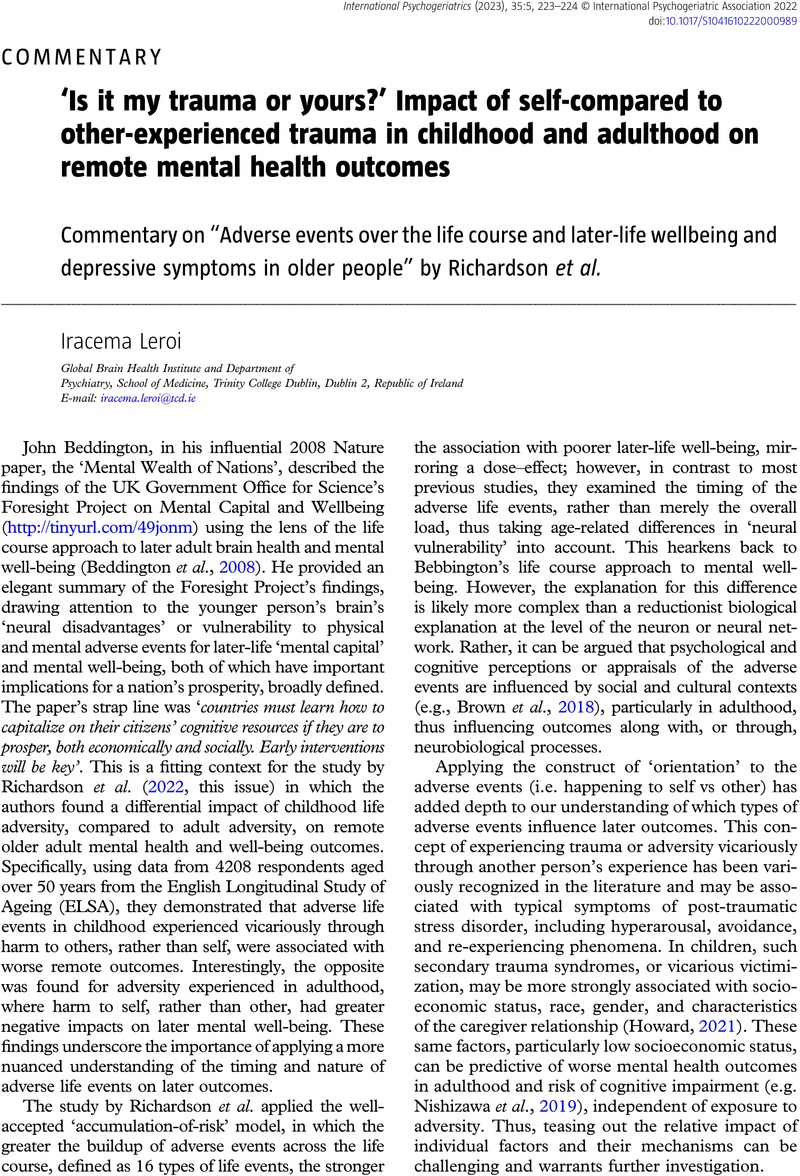Crossref Citations
This article has been cited by the following publications. This list is generated based on data provided by Crossref.
Compton, Michael T.
2023.
Improving the well-being of older adults requires programs that enhance resilience as well as policies, across sectors, that promote health.
International Psychogeriatrics,
Vol. 35,
Issue. 5,
p.
215.



